Excerpts from Jim Conrad's
Naturalist Newsletter
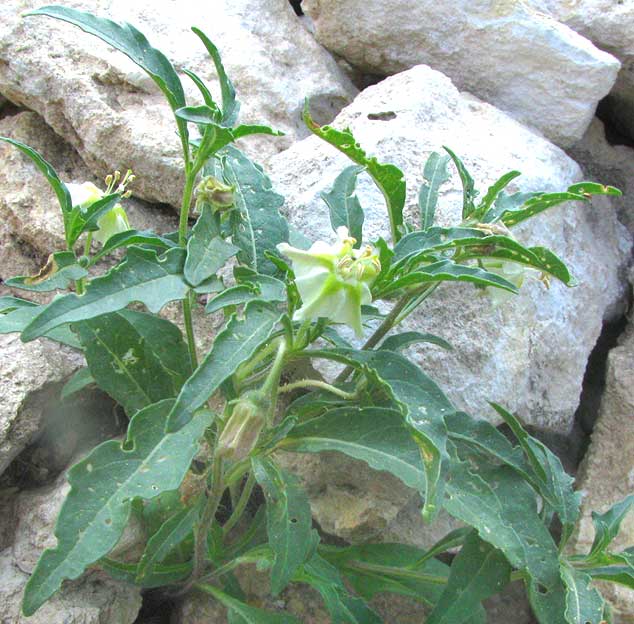
from the July 14, 2013 Newsletter issued from the Frio Canyon Nature Education Center in the valley of the Dry Frio River in northern Uvalde County, southwestern Texas, on the southern border of the Edwards Plateau; elevation ~1750m (~5750 ft); N29.62°, W99.86°; USA
FIVE-EYES
While digging a trench through Glen Rose limestone for the nature center's pipes and wires I erected several nice rock piles. A few herbaceous plants, which most would call
"weeds," came up through the rocks; you can see one above.
With the corolla so shallowly lobed that it more or less forms a disk, and with the leaves with their entire margins (un-toothed and un-lobed) looking very much like those of the local nightshades, I figured that this was a member of the big, important Nightshade Family, the Solanaceae. However, the five anthers of a nightshade are fused with one another by their margins to form a cylinder around the pistil's style, and they open by pores at their tips. The stamens of this plant didn't do that, as you can see below:
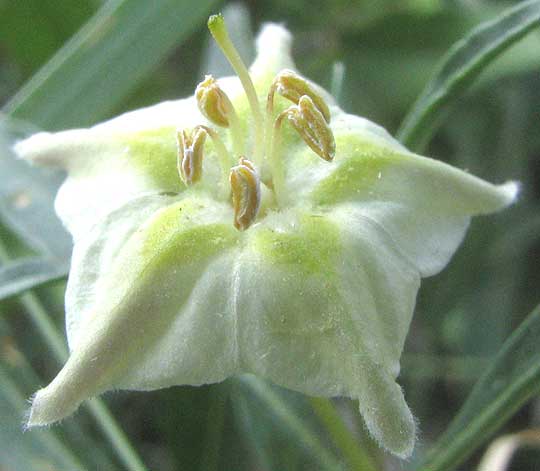
The anthers aren't at all fused, and they split lengthwise to release their pollen, like normal anthers, instead of having pores at their tips. So, what is this?
My first thought was that it might be what's variously called a ground cherry or tomatillo, genus Physalis, because ground cherries bear corollas more or less like this flower. However, ground cherry calyxes expand and inflate to form a kind of spherical bladder with the fruit suspended inside. Looking below the rock-pile flower, the calyx didn't seem to indicate any inclination at all to expand and inflate, as you can see below:
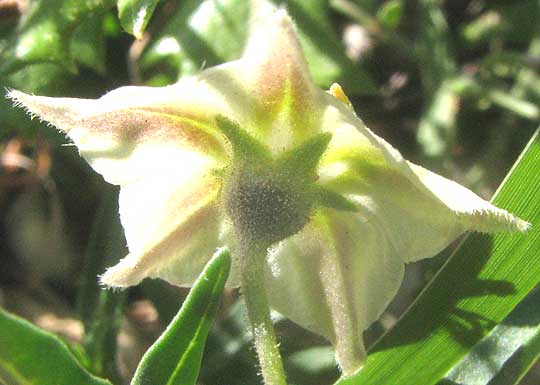
While looking beneath the flower, however, one couldn't fail to notice that this plant was thickly invested with short hairs.
As it turned out, this "weed" rising up among rocks stacked just a few weeks ago turned out to be a bit uncommon. It is indeed closely related to the ground cherries, but it differs from them by its calyx not forming a bladder around the fruit. It's CHAMAESARACHA EDWARDSIANA, listed in books as Edwards Plateau Five Eyes or Plateau False Nightshade. The common names and the "edwardsiana" in the binomial point to the fact that the species favors a few counties here on the southern slope of the Edwards Plateau in southwestern Texas, though it also occurs sporadically in New Mexico and arid northern Mexico. The genus Chamaesaracha comprises about nine species, all native to arid northern Mexico and the southwestern US. As a group they're often called five-eyes because of the five dark splotches normally marking their corollas.
At least four species of Chamaesaracha are known to occur in Uvalde County. Interestingly, this is one genus in which distinguishing the species is based less on characters of flower and fruit than on the types of hairs occurring on various parts of the body. To be Chamaesaracha edwardsiana our plant had to display the following field marks:
First, the stems had to be clothed in short, branched hairs, which they were, as was apparent below the dissecting scope, as shown below:
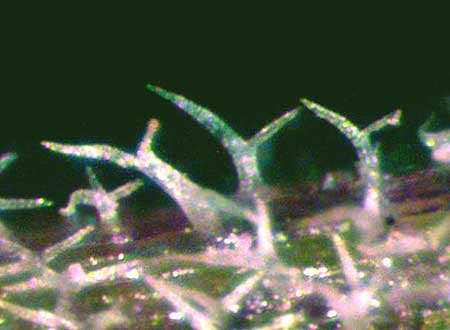
Second, the flower stems, or pedicels, had to be covered with hairs tipped with sticky glands, which they were, as shown below:
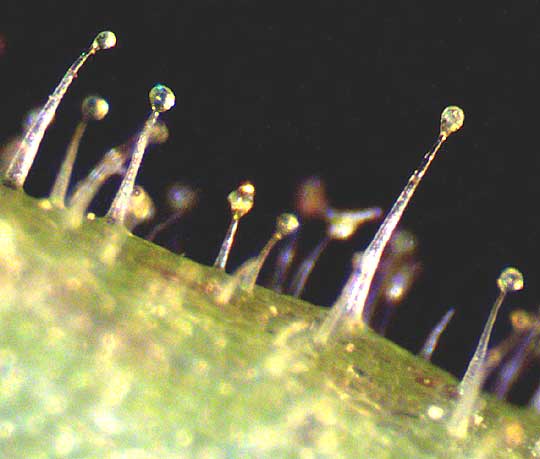
I don't recall having encountered before a group of plants in which the species so consistently differentiated themselves by having different kinds of hairs in different places. For example, if the glandular hairs hadn't been present, we would have had Chamaesaracha coronopus.
Also, when a "weed" grows up inside a pile of rocks, normally in the temperate zone it turns out to be an invasive of Eurasian origin. This is the first time I can recall a species of such limited occurrence quickly taking root in such a disturbed habitat. Maybe it evolved to pioneer vegetation in such places as where flashfloods pile up gravel.